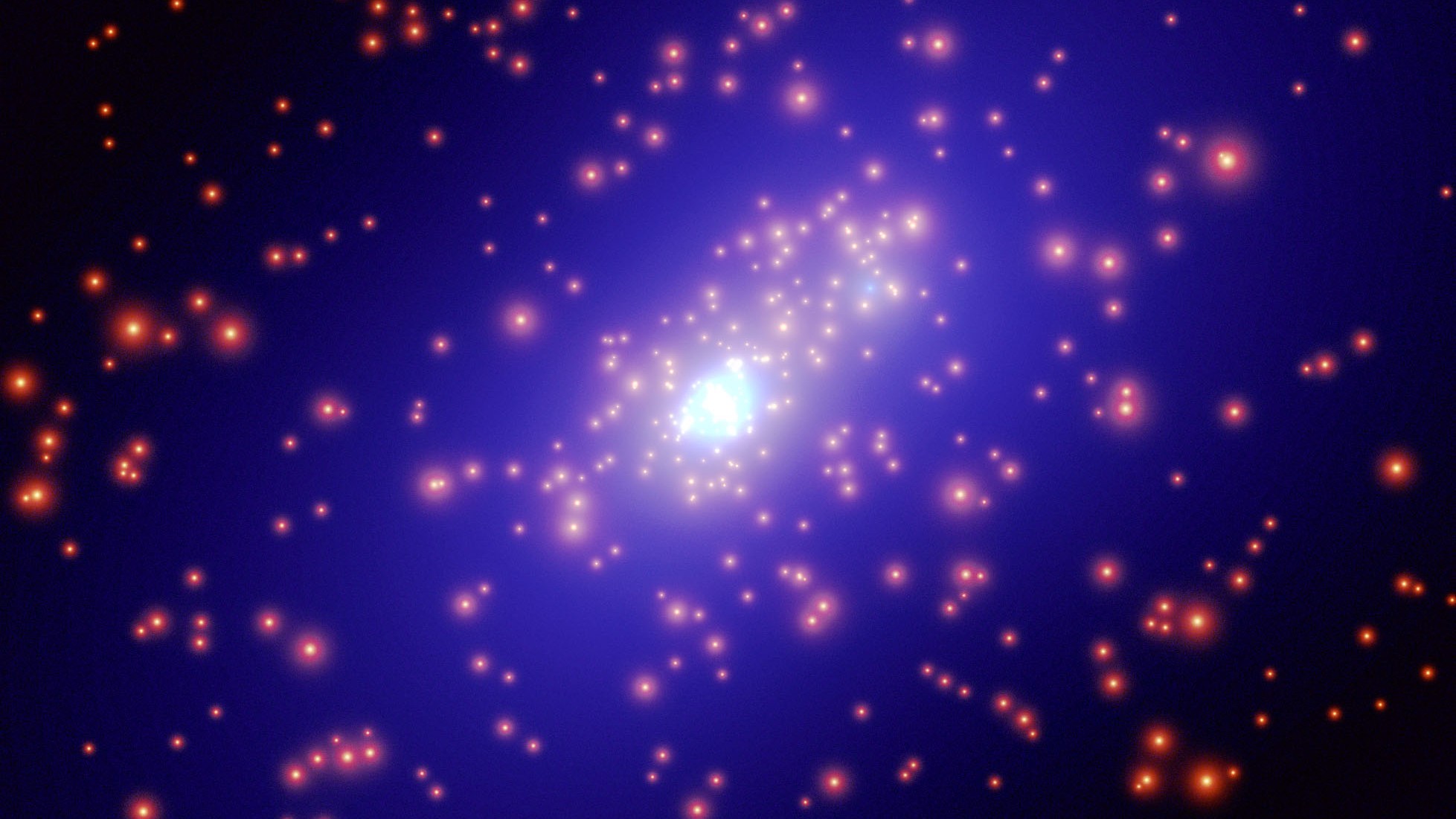There may have been a second Big Bang, new research suggests
Within a month of the Big Bang, a second cosmic explosion may have given the universe its invisible dark matter, new research suggests.

The Big Bang may have been accompanied by a shadow, "Dark" Big Bang that flooded our cosmos with mysterious dark matter, cosmologists have proposed in a new study. And we may be able to see the evidence for that event by studying ripples in the fabric of space-time.
After the Big Bang, most cosmologists think, the universe underwent a period of rapid, remarkable expansion in its earliest moments, known as inflation. Nobody knows what triggered inflation, but it’s necessary to explain a variety of observations, like the extreme geometrical flatness of the universe at large scales.
Inflation was presumably driven by some exotic quantum field, which is a fundamental entity that soaks all of spacetime. At the end of inflation, that field decayed into a shower of particles and radiation, triggering the "Hot Big Bang" that physicists commonly associate with the beginning of the universe. Those particles would go on to coalesce into the first atoms when the cosmos was around 12 minutes old and — hundreds of millions of years later — begin clumping into stars and galaxies.
But there's another ingredient to the cosmological mix: dark matter. Once again, cosmologists aren't sure what dark matter is, but they see the evidence for its existence through its gravitational influence on normal matter.
In the simplest models, the end of inflation and the ensuing Hot Big Bang also flooded the universe with dark matter, which evolved along an independent track. But this assumption is made merely for the sake of simplicity, two cosmologists proposed in a paper appearing in February on the preprint database arXiv. Scientists see no evidence for the existence of dark matter until far later in the evolution of the universe, after the elusive substance had enough time to exert gravitational influence, so there's no need for it to have filled the universe in the Hot Big Bang alongside normal matter. Plus, because dark matter does not interact with normal matter, it might have had its own "Dark" Big Bang, the researchers claim.
The Dark Big Bang
In their paper the researchers explored what a Dark Big Bang would look like. First, they hypothesized the existence of a new quantum field — a so-called "dark field," that is necessary to allow dark matter to form completely independently.
In this new scenario, the Dark Big Bang only gets underway after inflation fades away and the universe expands and cools enough to force the dark field into its own phase transition, where it transforms itself into dark matter particles.
Get the world’s most fascinating discoveries delivered straight to your inbox.
The researchers found that the Dark Big Bang had to obey certain constraints; if too early, there would be too much dark matter today, and if too late, there would be too little. But if the Dark Big Bang happened when the universe was less than a month old, it could agree with all known observations.
Introducing a Dark Big Bang has several advantages. First, it's consistent with what scientists know about dark matter: if it doesn't interact with normal matter, then there's no reason for them to share a common origin. Second, it allows the researchers to create models of dark matter without having to worry about how they'll affect the behavior of normal matter at very early times, which gives scientists much more flexibility in creating models.
But most importantly, the researchers found that a Dark Big Bang produces a particular signature in gravitational waves, which are ripples in space-time that still slosh around the universe in the present day. That means the theory could one day be testable.
The researchers admit that current gravitational wave experiments do not have the sensitivity to find signatures of the Dark Big Bang. But another probe of gravitational waves using distances to far-flung pulsars, known as Pulsar Timing Arrays like the NANOGrav experiment, might just be able to do the trick.

Paul M. Sutter is a research professor in astrophysics at SUNY Stony Brook University and the Flatiron Institute in New York City. He regularly appears on TV and podcasts, including "Ask a Spaceman." He is the author of two books, "Your Place in the Universe" and "How to Die in Space," and is a regular contributor to Space.com, Live Science, and more. Paul received his PhD in Physics from the University of Illinois at Urbana-Champaign in 2011, and spent three years at the Paris Institute of Astrophysics, followed by a research fellowship in Trieste, Italy.


